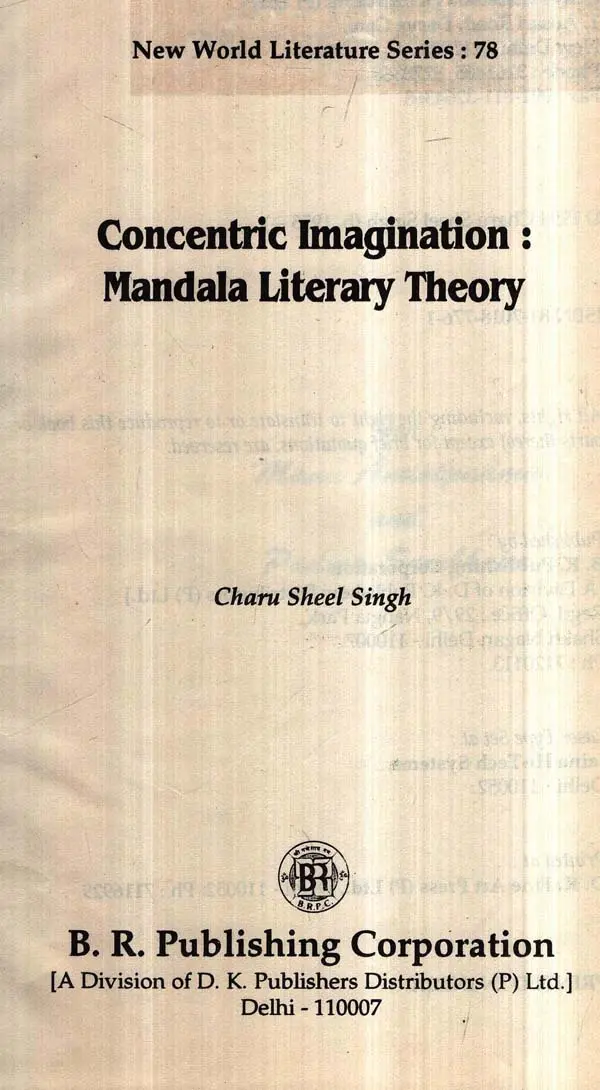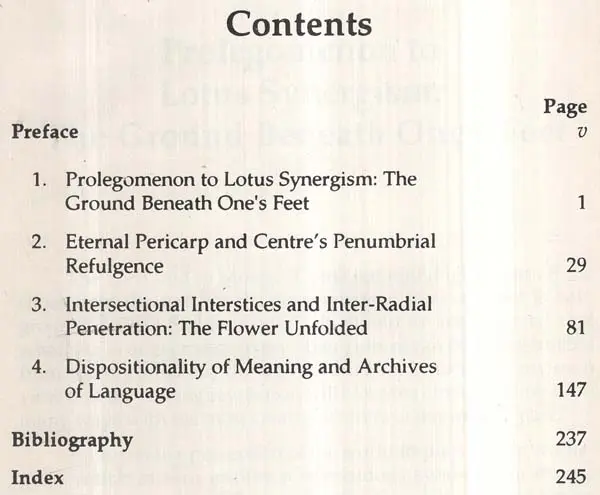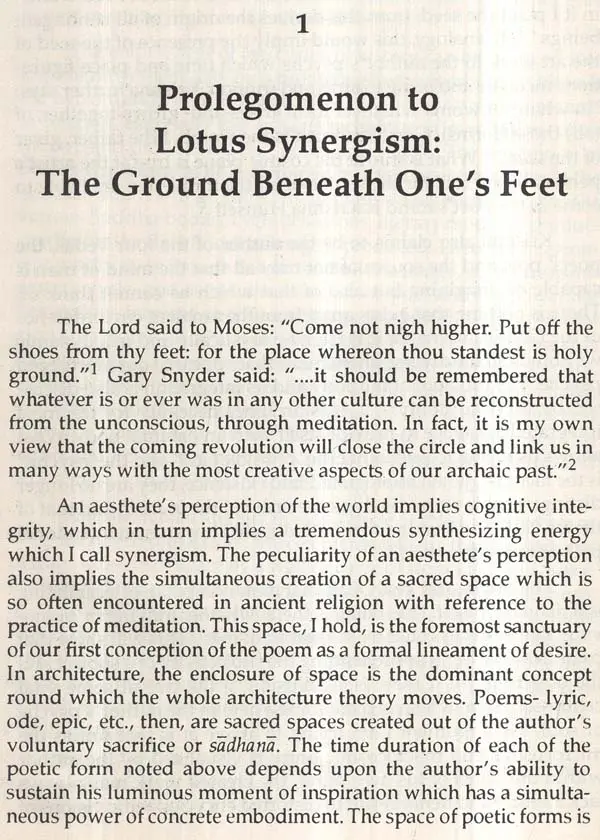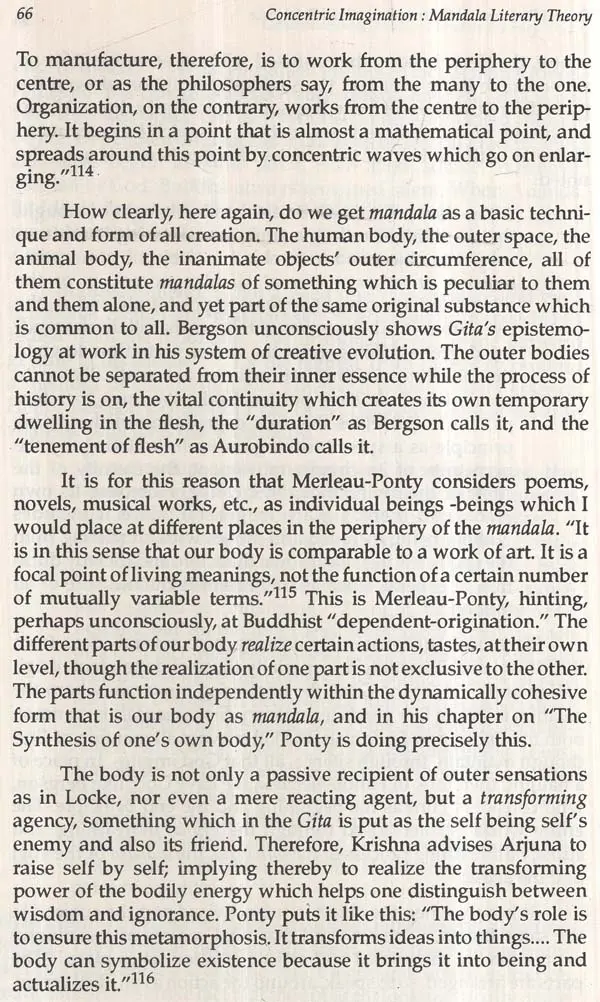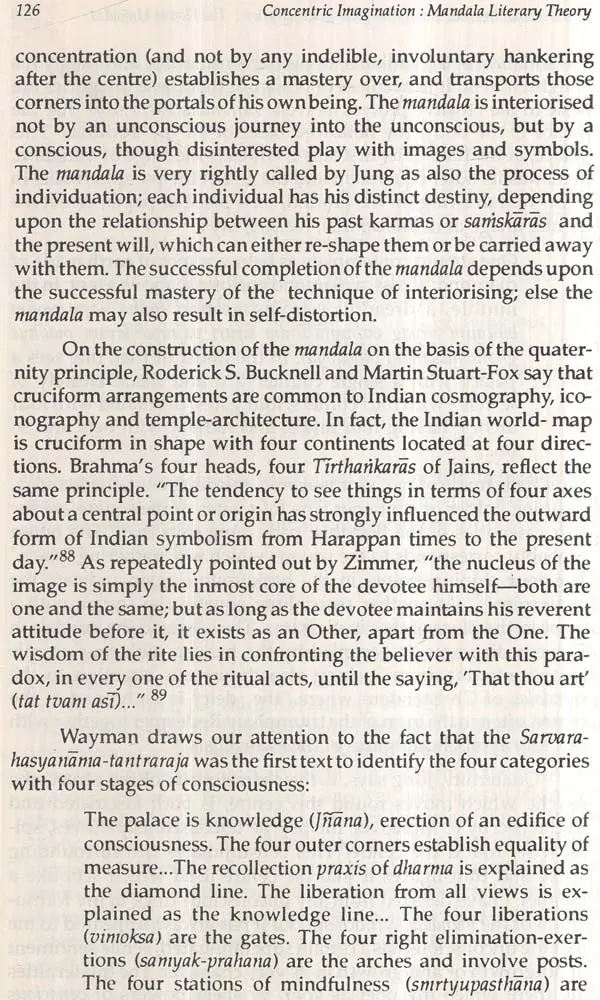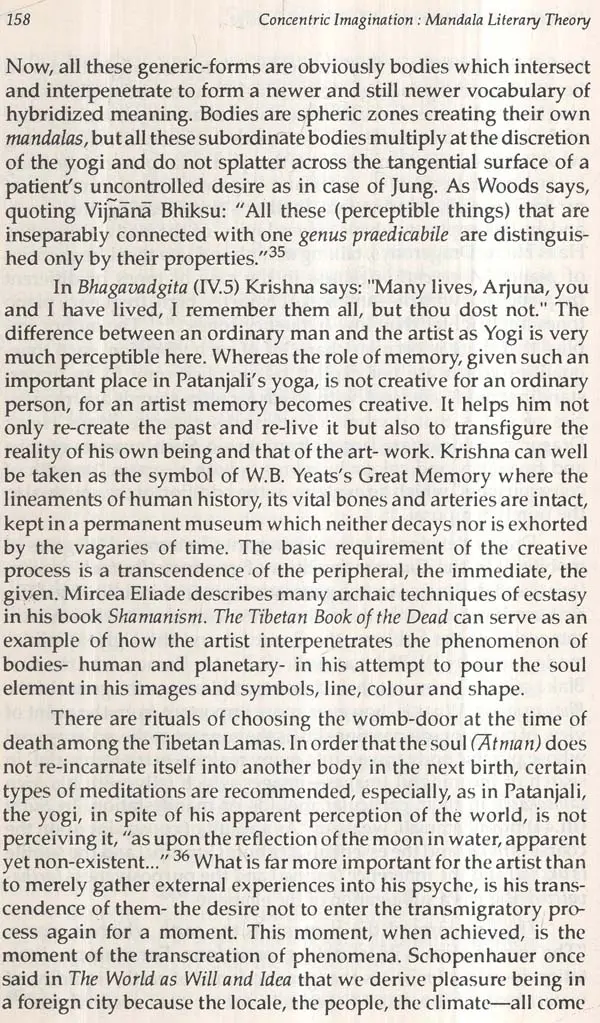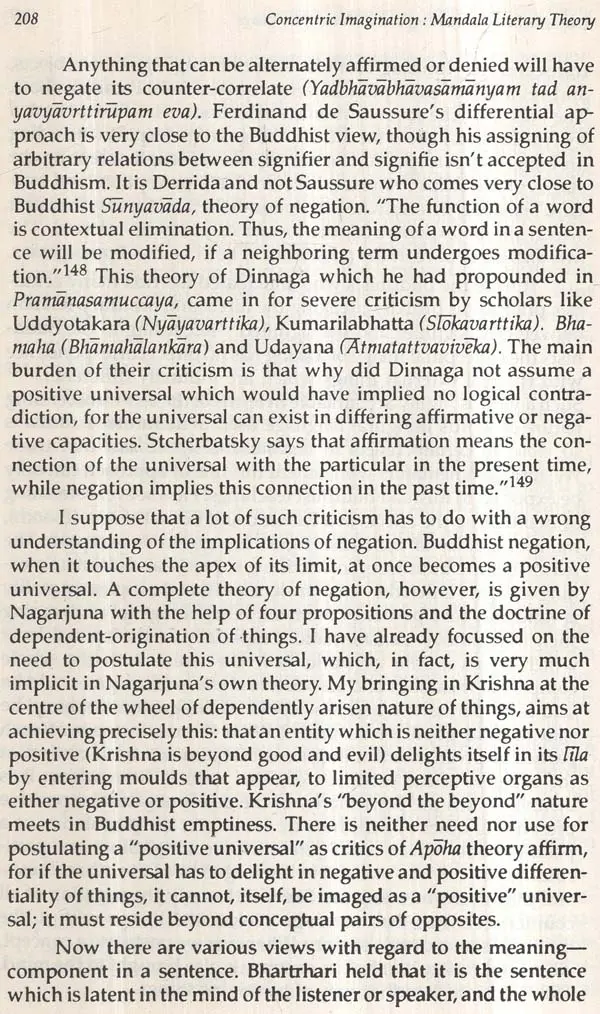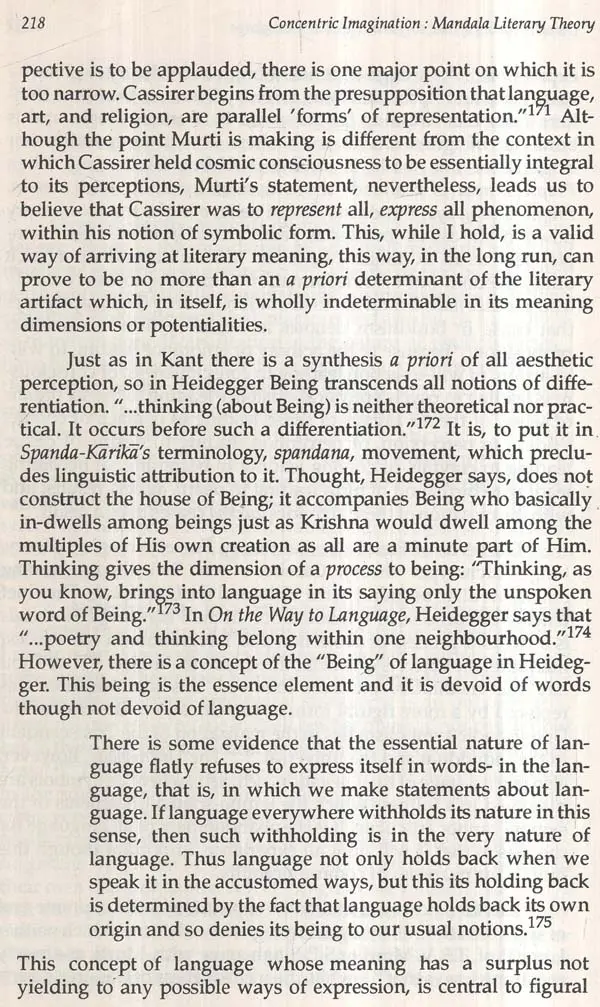
Concentric Imagination: Mandala Literary Theory
Book Specification
| Item Code: | UAK958 |
| Author: | Charu Sheel Singh |
| Publisher: | B.R. Publishing Corporation |
| Language: | English |
| ISBN: | 8170187761 |
| Pages: | 263 |
| Cover: | HARDCOVER |
| Other Details | 9.00 X 6.00 inch |
| Weight | 390 gm |
Book Description
Concentric Imagination develops a heremeneutics of the understanding of literary text in a language and idiom that has almost been foreign to literary theory criticism so far. The foundations of such heremeneutics are based upon Indian philosophical, epistemological, and metaphysical traditions (Buddhist in par ticular) that prove to be the shaping and generating forces of either a readerly or a writerly text in the Indian context. The book also unfolds the mysterious secrets of the creative process in terms of body-plexus sym bolism. The reader's polyphonic and polysemic experience is corroborated in terms of vital correspondences that not only inhabit and inbreed the circumferential spaces of the mandala (centre) but also recreate and inte grate them into the Vajra-kaya (Diamond Body) of the art work and the artist both of whom undergo ceremonies of transubstantiation. They ultimately become pure rasas, essences. The argument pursued throughout the book is bound by a certain teleology of form (though atelic freedom is given for full poetic growth) that is largely based upon the dependently-originated (Pratitya-Samut pada)nature of things, the artist's samskäras (impressions), and his existence in a particu lar body-mandala in a specific time-space continuum. The emphasis is laid upon inter penetration (cakka-viddham), the threading of the circle, in relation to the sun-cycle immanent in the artist as yogi. All this is done with reference to the poetic categories created for the purpose-the lyric, the longer lyric, the dialectical poem, and the epic poem.
The book is the only attempt of its kind ever made in the field of literary theory and criticism which, in recent times, has increasingly grown multi-disciplinarian. The book never loses touch with the 'contemporaneous' in recent theory and criticism. It illumines spaces hitherto shrouded in darkness and creates spaces that have not been available to critical consciousness.
Dr. Singh is working as Reader in English, Department of English, Kashi Vidyapith University, Varanasi. He is currently engaged in a project on philosophical Heremeneutics.
Notwithstanding seemingly exclusive opposition between imitative and expressive theories of art, all genuine art is informed by a certain internal telos that has corresponding links with the outer hieroglyphics of experience. The distinction, therefore, between imitative and expressive, tends to merge as A.K. Coomaraswamy feels, in the vibrant and dynamic notions of art as "participation," kinaesthetics as I prefer to call it. The symbolism of the centre and the circumference is basic to Indian religious and philosophic tradition and this was shown by Heinrich Zimmer as early as 1926 when his classic Kunstform und Yoga in indischen Kultbild was published by Frankfurter Verlags-Anstalt in Berlin. The concept of body plexuses in the ascending order, resulting in the full-bloomed, thousand-petalled lotus, is no other than what the symbolism of the circle (mandala) and the centre visualizingly wishes to designate. The same symbolism, I feel, is known in Buddhism (with all epistemological burdens) as dependent-origi nation (prafitya-samutpada) forming the circumference (mandala), and emptiness (sunya), roughly tending towards, though never fully apprehending, the centre, given time- space limitations.
This book develops a theory of literature in general, and a theory of literary criticism and that of reading literature in particular. The sources this heremeneutical study draws upon are chiefly-Nagarjuna's Mulmadhyamak-Karika and Vigrahavyavartani, Patanjali's Yoga-Sutras, Bhagavadgita, Upanisads, along with available scholarship on such and related topics. Mention must, however, be made of Sir Arthur Avalon, Stella Kramrisch, H.Zimmer, Mircea Eliade, Anand K. Coomaraswamy, S. Radhakrishnan, Paul Mus and Alice Boner, whose researches in divergent, though rela ted areas, have greatly helped me form an aesthetic vision of my own of the literary artifact. Contemporary literary theorists that I draw upon are, notably, Paul de Man, Murray Krieger, Harold Bloom, Geoffrey Hartman, Kenneth Burke, Jacques Derrida, Roland Barthes, Merleau-Ponty, Mikel Dufferene, Husserl, Hegel, Heidegger, among others.
Book's Contents and Sample Pages
